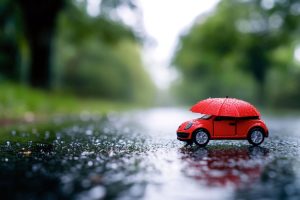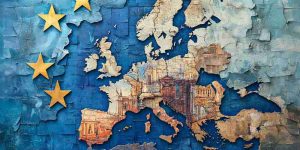The euro: a failed experiment with lasting damage

The euro’s broken promise: how a currency meant to unite Europe brought decline, inequality, and devaluation
When the euro was launched at the turn of the millennium, it was hailed as a historic leap toward European unity. The rhetoric was grand: a single currency for a single market, built on promises of stability, prosperity, and integration. The euro, its architects claimed, would make Europe more competitive on the global stage, end exchange rate uncertainty, and bind nations so tightly together that conflict would become unthinkable.
Yet more than two decades later, the European currency has failed to deliver on nearly every one of its promises. Far from creating cohesion, the euro has magnified Europe’s internal divisions. It has entrenched inequalities between north and south, eroded the sovereignty of its member states, and tied weaker economies to a monetary system designed for the strong. Instead of the stable and prosperous Europe promised in the late 1990s, the euro has presided over stagnation, debt crises, and a dramatic loss in the value of the currency itself.
Today, the euro is a far cry from the symbol of strength it once aspired to be. From an exchange rate of around $1.60 against the US dollar in 2008, the euro has fallen to roughly parity in recent years, occasionally dipping below one dollar. Its purchasing power has eroded across the board. Inflation, austerity, and negative interest rates have combined to hollow out the savings and income of ordinary Europeans. The dream of a stable and respected global currency has faded into the reality of an unstable and politically explosive experiment.
The political birth of a currency without a country
The idea of a common European currency did not emerge from economics, but from politics. In the aftermath of the Second World War, European integration was seen as the surest path to peace and stability. The Maastricht Treaty of 1992 formalized the blueprint for Economic and Monetary Union (EMU), setting rigid criteria for inflation, debt, and deficits.
But as Nobel laureate Paul Krugman aptly put it, the euro was “a currency without a country” (The Return of Depression Economics, Paul Krugman). The economies of Germany, Italy, Greece, and Portugal were wildly different in productivity, industrial structure, and fiscal culture. To bind them together under one monetary authority, the European Central Bank (ECB), was to force them into an economic straitjacket.
The ECB would set one interest rate for all, regardless of local conditions. National governments would lose the ability to devalue their currencies, control their money supply, or respond flexibly to crises. The euro, in effect, centralized monetary power in Frankfurt while stripping national parliaments of their most important economic tools.
A one-way street with no escape
Once a country adopts the euro, there is no formal mechanism for leaving it without exiting the European Union altogether. This “one-way street” created a dangerous rigidity. Member states surrendered their monetary sovereignty but retained full exposure to market shocks. When crisis struck, they could not devalue, print money, or adjust interest rates to stabilize their economies.
Instead, they were left dependent on ECB policy decisions designed primarily for the economic needs of northern Europe. For countries like Greece, Italy, or Spain, this meant being trapped in a deflationary cycle of high debt, weak growth, and endless austerity.
The euro’s architecture was designed to prevent inflation, not to promote recovery. It worked only for economies already strong enough to thrive under a hard currency regime.
The German model: a system built for the strong
The euro’s foundation was built on German monetary orthodoxy: low inflation, tight fiscal discipline, and strict central bank independence. For high-productivity export nations such as Germany, this framework fit perfectly. The euro effectively served as an undervalued Deutsche Mark, boosting German exports by keeping prices lower than they would have been under a national currency.
Had Germany retained the mark, its strength would have appreciated significantly, reducing export competitiveness. Instead, the euro’s blended value, weighted by weaker economies, kept the currency artificially low for German industry. The result was a structural advantage that generated massive trade surpluses.
Southern economies, meanwhile, were crushed by the opposite dynamic. For Greece, Italy, Spain, and Portugal, the euro was too strong, making exports expensive and imports cheap. This imbalance hollowed out domestic industries and fueled dependence on external credit (The Euro Trap, Hans-Werner Sinn).
The illusion of strength and the reality of cost
Although the strong economies initially profited from the euro, they soon discovered its hidden costs. The eurozone evolved into what economists call a transfer union, a system where wealthy northern nations continually fund bailout mechanisms, guarantees, and emergency loans for weaker members.
Germany and the Netherlands have become perpetual net contributors to institutions like the European Stability Mechanism (ESM), which financed rescue packages for Greece, Portugal, and others. These bailouts were often presented as acts of European solidarity, but in reality they primarily served to protect creditor banks in Germany and France (The Euro and the Battle of Ideas, Markus Brunnermeier et al).
The burden of this structure falls on taxpayers in stronger economies, while the supposed beneficiaries in the south remain trapped in debt dependency. Meanwhile, the common currency that was meant to symbolize equality has become a tool of economic subjugation.
The fall in the euro’s value: from prestige to decline
When the euro was launched in 1999, it was worth around $1.17. It soon fell below parity, recovering only in the early 2000s before peaking at $1.60 in 2008. Since then, its long-term trend has been downward.
This decline reflects not only fluctuations in global markets but deep structural weakness within the eurozone. The single currency lacks the fiscal and political foundations of a true monetary union. Unlike the United States, which has a unified treasury and fiscal transfer mechanisms, the eurozone has no central budget capable of stabilizing regional imbalances.
As a result, the euro remains perpetually fragile. The ECB’s resort to negative interest rates, quantitative easing, and massive bond-buying programs has flooded markets with liquidity but eroded real value. Inflation has accelerated sharply since 2020, further reducing purchasing power.
A euro that once symbolized strength now buys less and inspires less confidence. Between 2008 and 2023, the euro lost roughly 40 percent of its value against the dollar, while domestic inflation reduced internal purchasing power even more severely. For ordinary Europeans, this has meant rising prices, stagnant wages, and shrinking savings.
Erosion of savings and the punishment of prudence
The ECB’s policy of near-zero and negative interest rates, combined with its asset purchase programs, has devastated savers across Europe. In northern countries like Germany and the Netherlands, where thrift is a cultural virtue, decades of disciplined saving were wiped out by policies designed to sustain weaker economies.
Dutch pension funds, among the largest in the world, were forced to apply absurdly low actuarial rates, leading to benefit cuts even when investment returns were positive (Sparen in tijden van rente nul, DNB). In effect, the ECB’s monetary policy became a hidden tax on the middle class, transferring wealth from savers to debtors, and from the prudent to the reckless.
Meanwhile, cheap money inflated asset prices, enriching those who already owned property or stocks. Inequality widened, and resentment grew against a system that rewarded speculation and punished saving.
Inflation disguised and dismissed
From the very beginning, the euro’s introduction led to a perceptible increase in prices. Official statistics understated this rise, but citizens immediately noticed. The so-called “Teuro” phenomenon in Germany, combining “teuer” (expensive) and “euro”, captured public frustration.
Items that once cost 1 Deutsche Mark or 1 guilder were suddenly repriced at 1 euro. The psychological effect was a stealth doubling of prices for everyday goods. The ECB brushed off this issue as “perceived inflation, ” but studies confirmed significant sectoral price increases between 2002 and 2004 (Euro and Prices: A Comparative Analysis, ECB).
Real wages, however, remained stagnant. In Italy, real incomes in the 2020s are comparable to those in the early 1990s (La trappola dell’euro, Alberto Bagnai). For most citizens, the euro became a symbol not of prosperity, but of diminished purchasing power.
The Greek collapse: a crisis made by the euro
The Greek debt crisis remains the clearest demonstration of how the euro’s design can destroy a nation. By joining the euro, Greece gained access to cheap credit and borrowed heavily. When the global financial crisis hit in 2008, the country’s overleveraged economy imploded.
Unable to devalue its currency or set its own interest rate, Greece was forced into brutal austerity under the supervision of the so-called Troika, the European Commission, the ECB, and the IMF. GDP collapsed by more than 25 percent, unemployment soared above 27 percent, and poverty spread across the population (Adults in the Room, Yanis Varoufakis).
The bailout funds that followed were not used to rebuild the Greek economy but to repay French and German banks holding Greek debt. As Varoufakis observed, it was “the greatest transfer of public wealth to private creditors in peacetime” (The Global Minotaur, Yanis Varoufakis).
The human toll was catastrophic: hospitals without supplies, pensioners pushed into destitution, and a mass exodus of young professionals. The euro, meant to unify Europe, turned one of its members into a debt colony.
Fiscal handcuffs: austerity as policy
The eurozone’s Stability and Growth Pact enforces strict limits on budget deficits (3 percent of GDP) and public debt (60 percent of GDP). These rules, designed to ensure discipline, have proven disastrous in recessions. Governments are forced to cut spending when they most need to increase it, deepening downturns instead of alleviating them.
During the euro crisis, countries like Spain and Portugal were prohibited from launching stimulus programs. Public investment collapsed, unemployment surged, and entire generations lost economic prospects (The Euro and the Battle of Ideas, Markus Brunnermeier et al).
Unlike the United States, which can run deficits and issue federal bonds, the eurozone lacks a unified fiscal authority. National governments must seek permission from Brussels and Frankfurt to spend their own money. The result is a monetary union without fiscal union, a structure that magnifies rather than mitigates crises.
Divergence instead of convergence
The euro was sold as a project of economic convergence, but it has produced the opposite. Between 2000 and 2020, Germany’s trade surpluses reached record highs, while southern countries sank deeper into deficit.
Germany’s manufacturing exports flourished under an undervalued euro. Meanwhile, Italy’s industrial output stagnated, Spain’s youth unemployment soared to over 50 percent, and Greece’s GDP per capita fell to pre-1990s levels (EuroTragedy, Ashoka Mody).
Within nations, inequality also widened. ECB policies inflated financial markets, boosting asset owners while wage earners were left behind. Urban real estate soared in price, while rural regions decayed. The promise of shared prosperity gave way to an economic geography of winners and losers (Act now or sink together, Heiner Flassbeck).
Rule by technocrats: democracy sidelined
The euro fundamentally altered the balance between democracy and technocracy in Europe. Economic policymaking is now dominated by unelected institutions, the ECB, the European Commission, and the Eurogroup. National parliaments can be overridden when their policies conflict with European directives.
In 2015, the ECB threatened to cut liquidity to Greek banks unless the government accepted austerity conditions. Elected officials were effectively blackmailed into compliance. As Joseph Stiglitz observed, the euro “has undermined democracy in ways unimaginable before its creation” (The Euro and Its Threat to the Future of Europe, Joseph Stiglitz).
National sovereignty has been hollowed out. Governments can no longer pursue independent fiscal strategies. Budgets must be approved by Brussels, and any deviation invites reprimand or sanctions. The economic union has become a political straitjacket, eroding trust in democratic institutions.
Minor conveniences, major costs
Supporters of the euro often point to its practical benefits: no exchange fees when traveling, easier cross-border trade, and price transparency. Yet these conveniences pale in comparison to the social and economic costs.
Real wages have stagnated for two decades. Public services, especially in southern Europe, have deteriorated. Economic insecurity has risen across the continent. Meanwhile, the beneficiaries of the system are large corporations and financial institutions that profit from the single market.
Even the euro’s supposed trade benefits are overstated. Studies indicate that most trade growth stems from the single market framework itself, not from the common currency (The Euro and its Threat to the Future of Europe, Joseph Stiglitz). Europe could have enjoyed the same commercial integration through coordinated exchange rate mechanisms without surrendering monetary sovereignty.
A fragile future
The eurozone remains structurally incapable of responding to crises. Whether during the 2008 financial collapse, the euro debt crisis, or the COVID-19 pandemic, Europe has struggled to coordinate coherent responses. The NextGenerationEU recovery fund was a temporary and tightly controlled measure, not a permanent fiscal framework (Post-Covid Europe, Bruegel Policy Contributions).
The ECB continues to print money to stabilize markets, further weakening the euro’s long-term value. As inflation erodes purchasing power, social unrest grows. Political movements across the continent, from Italy’s populists to Germany’s AfD, reflect mounting anger at a currency that serves elites but impoverishes ordinary citizens.
Conclusion: unity in name, division in reality
The euro was meant to symbolize unity, prosperity, and strength. In practice, it has delivered division, stagnation, and decline. It has turned sovereign nations into fiscal dependencies, punished savers, and devalued the very currency it was supposed to protect.
What began as a political dream has become an economic nightmare. The euro’s legacy, so far, is not prosperity but a slow erosion of value, of the currency, of living standards, and of democracy itself. Without radical reform or a return to national control, the euro will remain a monument to Europe’s misplaced faith in technocracy over sovereignty.
A single currency may have united Europe’s markets, but it has divided its people.
The euro’s true symbol today is not strength, but loss, loss of value, loss of independence, and loss of faith in the European project.


















